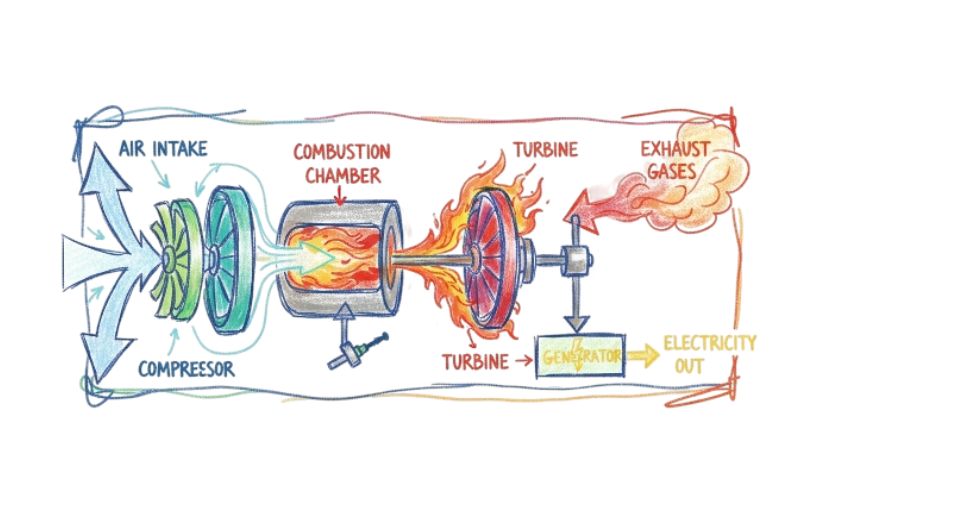
Sep 25, 2025

Metastat Insight, a trusted source of industry intelligence, has released a comprehensive report called global gas turbine market. The report presents a nuanced picture of the global status of gas turbines, revealing production capacity, technology settings, and operational deployments in energy, industrial, and aerospace uses. The report captures the way gas turbines remain a fundamental element of power generation and mechanical drive systems while presenting manufacturing innovations and performance gains defining this industry. The report offers a detailed analysis of the worldwide gas turbine market, charting its evolution through leaps in design, materials science, and system integration. The report underscores the shift from legacy turbine configurations toward high-performance designs that can accommodate varied load profiles and environmental conditions. It looks at the entire value chain of turbines, such as component vendors, engineering service firms, and end-user sectors depending on reliable and consistent turbine performance to conduct business.
Metastat Insight addresses principal areas of manufacturing processes, such as casting techniques, precision machining processes, and thermal barrier coating technologies. Emphasis is given to rotor dynamics, combustor design, and blade cooling technologies that affect efficiency and longevity. By putting these aspects into perspective, the report discusses how cumulative advancements at every step of manufacture integrate to produce gas turbines with increased operational stability and decreased maintenance cycles.
The study also examines installation frameworks, probing how turbines are installed in stand-alone and combined-cycle arrangements. It addresses ancillary infrastructure like compressors, gearboxes, and monitoring systems ensuring maximum output under dynamic operating conditions. The international gas turbine market is framed as a venue where engineering fineness, process reliability, and field performance meet to provide consistent energy and mechanical power solutions.
One of the publication's best sections is devoted to maintenance strategies and lifecycle management. Inspection cycles, replacement timing for components, and predictive maintenance technologies are discussed for their contribution towards reducing downtime as well as maximizing return on investment. According to the report, condition-monitoring sensors as well as digital twin models are being used more to forecast problems before they hit operations, providing continuity along with cost-effectiveness.
Metastat Insight also analyzes the geographic reach of manufacturing centers and service networks. Some areas concentrate on mass production of heavy-duty turbines, while others specialize in aeroderivative units suited for quick-start applications. The report addresses logistics issues, from shipping of components to in-plant assembly, giving a comprehensive view of how turbines are transported from factory floors to operational facilities globally.
Fuel flexibility and system flexibility are also addressed. The study reports on how turbines are designed to run on a variety of fuels, from traditional sources to reduced-emission fuels. Control systems with automatic fuel changeover and combustion optimization capabilities are discussed within this move towards operational flexibility.
Competitive analysis constitutes another important section, outlining top turbine manufacturers and service providers. The analysis captures product portfolios, geographic coverage, and joint ventures aimed at reinforcing market presence. It observes how collaborations with engineering, procurement, and construction firms amplify the efficiency of project execution and speed up deployment horizons.
Metastat Insight has a section dedicated to aftermarket services, which make up much of the market activity. Long-term service agreements, parts refurbishment programs, and field support initiatives are all presented as mechanisms that build enduring value for asset owners and enhance manufacturer relationships with customers.
Regional observations in the report chart differences in installed capacity, regulatory mandate, and grid infrastructure. These observations present a clear view of how different geographies address turbine integration, ranging from mature regions having developed grid systems to markets undertaking aggressive capacity growth.
By laying out these levels of information, the research places the international gas turbine industry in its role as a business segment that is marked by engineering prowess, relentless performance improvement, and strong service systems. The careful description of production, fielding, and support activities provides stakeholders with a complete vision of how turbines bring long-term operation value to various sectors.
In summary, the international gas turbine industry, as depicted by Metastat Insight, presents itself as a highly coordinated and technologically sophisticated segment that caters to urgent energy and industrial demands globally.
The report offers a comprehensive overview of production practices, operating models, and maintenance routines, thereby allowing readers to have an accurate perception of how this industry operates. By providing this level of understanding, Metastat Insight allows manufacturers, operators, and investors to have a sound basis for strategic planning in an industry where precision engineering and the reliability of operations are central to success.
Drop us an email at:
Call us on:
+1 5186502376
+91 73850 57479